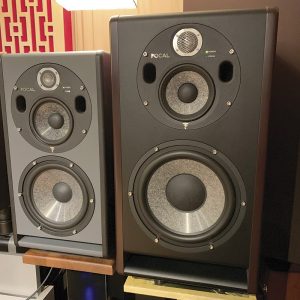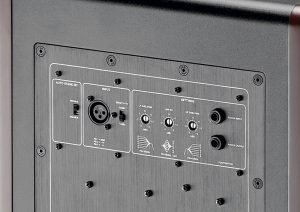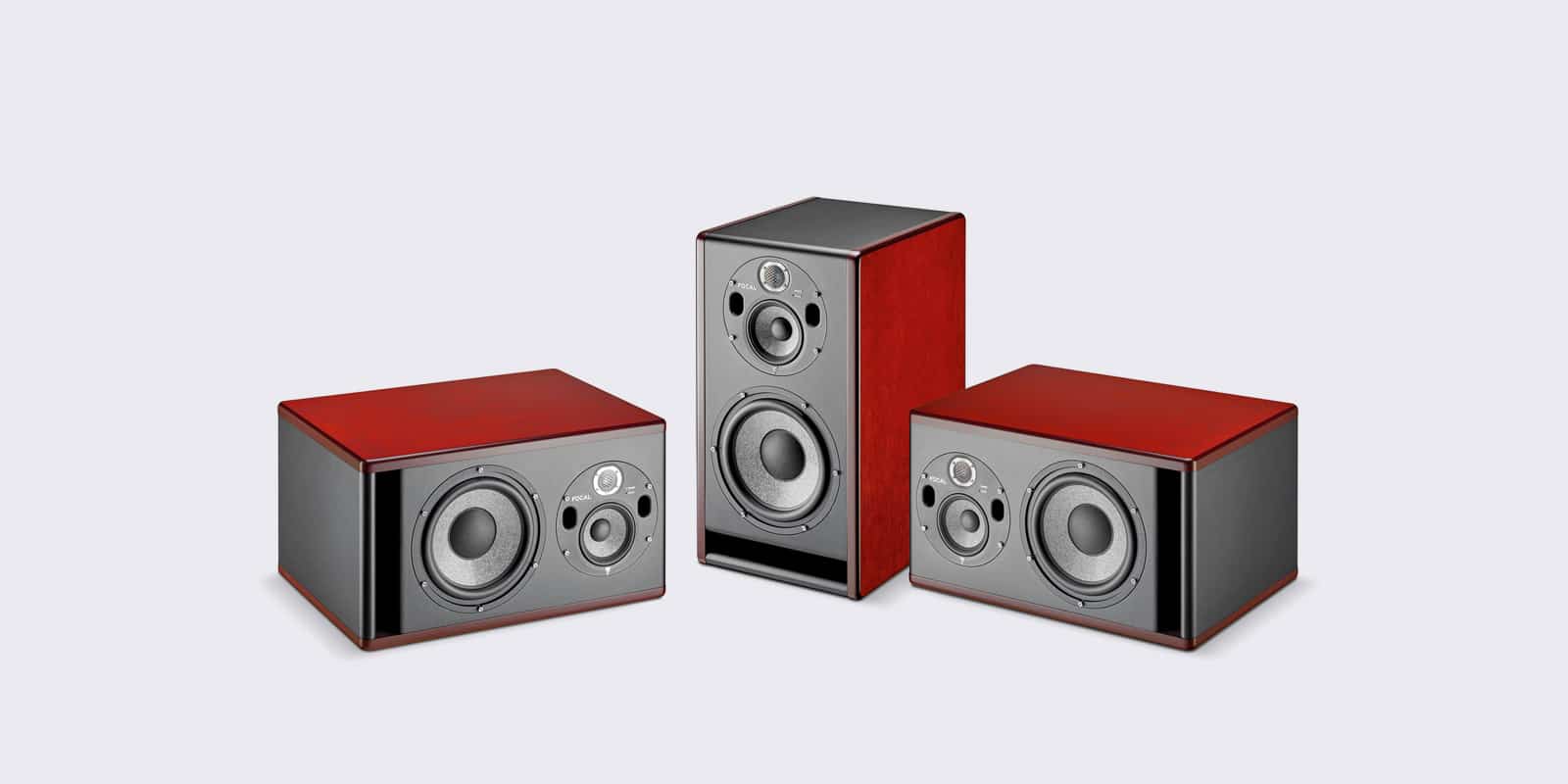Focal celebrates its 40th Anniversary with a beautifully designed powerhouse of a monitor that sounds as good as it looks
Review by Alex Hawley
Focal is a French speaker company that has been crafting speakers and speaker cabinets for 40 years. You can find Focal products in your car, in home hi-fi setups, and in recording studios world wide.
In the studio world, one can choose from the entry-level Alpha series (reviewed December 2014), step into the uniquely named and styled Shape series (November 2017), which includes the double-woofer Shape Twin (September 2018), the top-shelf Be models like the Twin6 Be (July 2008), and more.
Reviews
- Review: Chandler TG Microphone Type L
- July 2024: Strymon BigSky MX
- Review: Grace Design ROXi & REX
- Review: Genelec 8381A SAM™ Adaptive Point Source Main Monitor
- June 2024: Amphion One25A
- Review: Eventide Blackhole and MicroPitch Immersive
- May 2024: Ohma World Ribbon Microphone
- April 2024: Ableton Live 12
- March 2024: JZ Microphones BT202
- February 2024: JH Audio Pearl + Ruby
- February 2024: Antares Vocal Reverb by Auto-Tune
- January 2024: Ableton Push 3
In October 2015 we looked at the Trio6 Be, a versatile 3-way design built around Focal’s famous 1″ beryllium tweeter design—what the Be stands for, in case you were wondering. The Trio6 Be also made use of a 5″ woofer and an 8″ subwoofer. The Trio6 Be was designed to be used vertically or horizontally thanks to a removable 360º rotating baffle on which the tweeter and woofer are mounted.
I was so impressed with the Trio6 Be monitors that after that review, I purchased a set and have been mixing on them ever since. In my review I summed up the Trio6 Be as powerful, even, and full. At 20 1/2” x 10 15/16” x 14 3/16” inches and 44 lbs. each, they are also large and heavy.
And with that, let me introduce their brand-new big brother: The Focal Trio11 Be, which effectively makes a duo of Trios!
 Bigger
Bigger
On some level, the Trio11 Be is more or less a Trio6 Be, only bigger. Despite their many similarities, there are some significant differences as well, so let’s dig in.
The Trio11 Be measures 25″ x 17.7″ x 13.1″ and tips the scales at 82.2 lbs.
Its 360º rotating baffle again houses a 1″ Berylium inverted dome tweeter (this time covered by a protective grate to keep fingers away), a 5″ woofer, and side-
mounted bass ports. Like the Trio6 Be’s, this rotating baffle allows the Trio11 Be to be positioned vertically or horizontally.
Underneath that is a brand-new 10″ subwoofer and a larger forward-facing bottom bass port.
The 5″ and 10″ woofers feature Focal’s W composite sandwich cone design, first found on the Trio6 Be. W is a dual glass fiber design, where the cone is made up of two thin layers of woven glass fiber sandwiched together onto a structural foam core. It is equal parts rigid, homogenous, and highly flexible. The Trio11 Be also makes use of the company’s TMD (Tuned Mass Damper) design that suspends the speaker in the surround and helps aid in the smooth transmission and dispersion of frequencies.
The Trio11 Be kicks out a total of 550W of power, tri-amped as 300W Class G for the sub, 150W Class G for the woofer, and 100W Class AB for the tweeter. Combined it offers 118dB maximum SPL level in 3-way mode and 105dB in 2-way (Focus) mode. Frequency response is 30Hz–40kHz (3-way mode), 90Hz–20kHz (2-way mode).
Focus
The Focus feature was first introduced on Focal’s flagship SM9, and also used on the Trio6 Be. Focus mode requires the use of an additional foot pedal and a balanced 1/4“ cable. When connected to the speakers, it bypasses the sub, and activates a separate crossover with different parameters which alters the frequency response as mentioned above. This effectively turns the Trio11 into a 2-way speaker. This is useful for checking mixes and zeroing in on the sound and punch of your low end, rather than its force and feel.
 Further features
Further features
On the rear of the Trio11 Be, connections are made via a single balanced female XLR input with a switch to select an input sensitivity of +4 or –10dB. An EQ section allows you to gently tailor the speaker to your room with controls for ±3dB of low and high frequency shelving, as well as a low-mid frequency EQ.
There are also pair of parallel, balanced 1/4” jacks for connecting the Focus pedal and chaining to the other monitor. Last is a power switch, along with a switch to enable the speaker’s Auto-Standby Mode. When active, this puts the monitor in sleep mode when it does not sense a signal for a period of time, and then wakes it up again when signal returns.
In use
After bribing Paul Vnuk Sr. and Paul Vnuk III with dinner and drinks, we moved these beasts into place vertically in my room next to the Trio6 models. I connected them to my Drawmer MC3.1 Active Monitor Controller (reviewed March 2017), and spent a few months mixing and listening with them.
Moss Garden Music, my mix room, measures 12.5′ x 15.5′. It is fully trapped and treated, but it is still a converted office space and on the smaller side. I originally worried that the Trio6 Be was overkill for a room this size… so I figured the Trio11 Be would shatter my walls.
This may sound fairly obvious, but the Trio11 Be speakers are bigger in every way compared to the Trio6 Be, visually and sonically. Visually they are also a tad prettier, with a gorgeous red burr ash finish, similar to other upper-end Focal models. My Trio6 Be monitors are gray and black.
Soundwise they are louder, fuller, and quickly fill more space. The low end that they push is phenomenal. I never thought I needed a sub with the Trio6 Be, and you should definitely not need one with the 11. Technically they do have a switchable sub—it’s just that it is integrated into the box, which helps integrate the low end more seamlessly into your listening experience.
Relax
Despite (or perhaps because) of their size, there is an interesting relaxed nature to the Trio11 Be that the Trio6 Be does not have when compared side-by-side. I find the 6 more punchy and mid-forceful, the 11 is bolder and fuller. They do exhibit a similar overall tonality, especially in the upper mids and highs, but the extended push of the 11 fills the sound out more and makes them sound wider and even more diffuse, compared to the more forward and tighter-sounding 6. Despite their size, I liked how effortlessly they filled the space, and how well I could mix at lower volumes and not sacrifice any of their fullness or depth.
Due to the shared mid section, I expected the 6 and 11 to be much closer tonally in Focus mode, and while they do sound quite similar overall, even here the Trio11 offers a touch more beef. I assume this is due to the overall larger cabinet cavity.
It might sound like I am picking on the Trio6 Be, but I’m not. It’s just a fact of life that the bigger Trio11 Be is just that, bigger. It offers more sound, more fullness, more depth, and more low end. This is saying something, because the Trio6 Be is nothing to sneeze at when it comes to fullness and power!
The Trio6 Be has great presence and wonderfully tight imaging, but if you have the space and the funds, the Trio11 Be offers a dimensionality and a coverage that only premium large-
format 3-way monitors can offer.
Conclusion
With the Focal Trio11 Be, Focal offers its largest studio monitor to date. It is a great sounding and stylish entry into the world of large-format 3-way monitors, and you really need to demo a set yourself to hear and appreciate the depth and fullness they offer.
Price: $3999 (each)
More from: focal.com/en/pro-audio


